Introducing the New Arca Swiss Pico System
The Arca Swiss Pico is a new addition to the line of technical cameras by Arca Swiss, renowned for their precision and quality in camera and tripod systems. Pico has been designed as a compact and lightweight view camera, aimed at professional photographers who require precise control over their images, particularly needing shift and tilt functionalities. The camera allows the use of various lenses and can work with digital backs or cameras that have their own shutter, such as Fujifilm GFX, Phase One, Hasselblad, or other mirrorless cameras with smaller sensors.
For years, Arca Swiss has been known for its highest-quality products. So far, we have described and tested their D4 and C1 Cube tripod heads in APA. Besides the tripod heads, this manufacturer offers cameras from 3 series: R-Line, F-Line, and M-Line. The first series is a typical technical camera without a bellow and dedicated to working with a medium format roll film back or a medium format digital back. The other two lines are directly derived from large format view cameras and, thanks to the use of bellows and interchangeable standards, create an extremely versatile system. It’s a breeze to transition from the 6×7 cm standard format to the very large 5×7″ or even 8×10″ format. The same applies to the very lightweight F-Line or F-Line C with its folding rail, up to the very robust M-Line.
For architecture photographers working in the field with a digital camera, the most interesting model so far has been the F-Universalis, which allows for connecting, for example, a Sony mirrorless camera and shooting with various types of lenses. I had the opportunity to use such a camera, and it is truly a beautiful, excellently crafted object. However, by today’s standards, it is quite large, and I have the impression that for most photographers, its versatility is more of a drawback than an advantage. An open, extensive system is nice, but how many of us need to frequently switch between a 5×7 inch negative and a digital back and have an extensive set of Rodenstock or Schneider lenses with an image circle allowing us to utilize all these possibilities? Due to its universal design stemming from earlier models, Arca Swiss F-Universalis is not as rigid as it should be. With the high resolutions offered by modern sensors and lenses, this may be noticeable in photos.
That’s why Arca Swiss decided to follow in Cambo’s footsteps and create a new system dedicated to modern applications. Pico is designed without compromise. Here, there’s no option to attach a medium format (let alone large format) negative film cassette. We can’t connect other elements from the F and M lines. Instead, we have a very compact, lightweight, and precise system that may interest architectural and interior photographers.
Philippe and Martin Vogt’s legacy, Samuel Vogt’s passion and the expertise and enthusiasm of the ARCA-SWISS teams have been brought together to produce a new compact, user-friendly and supremely flexible tool designed to meet the demands of modern photography.
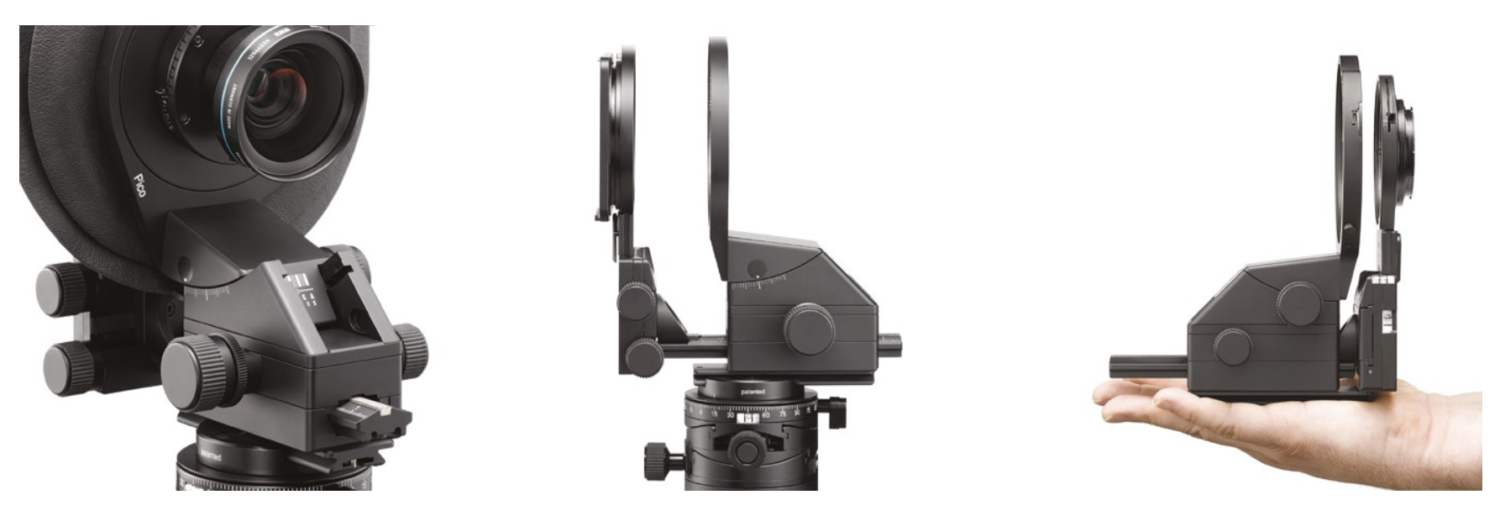
The patented Pico concept is unique by limiting the number of moving parts. A fixed, very solid front standard, and an ultra-rigid L-frame which slides into it ensures optimum parallelism between the front and the rear frame. This precision suits the setting accuracy requirements for current high-resolution sensors.
Designed for Mirrorless Cameras and Digital Backs
With its wide range of adaptors, the Pico system is compatible with the vast majority of mirrorless camera mounts and also with Mamiya/Phase One and Hasselblad digital backs. These adaptors offer great flexibility and are very simply interchanged by the use of a single locking lever. Pico provides reliable performance with the latest generation of sensors, meeting their increasingly demanding accuracy requirements.
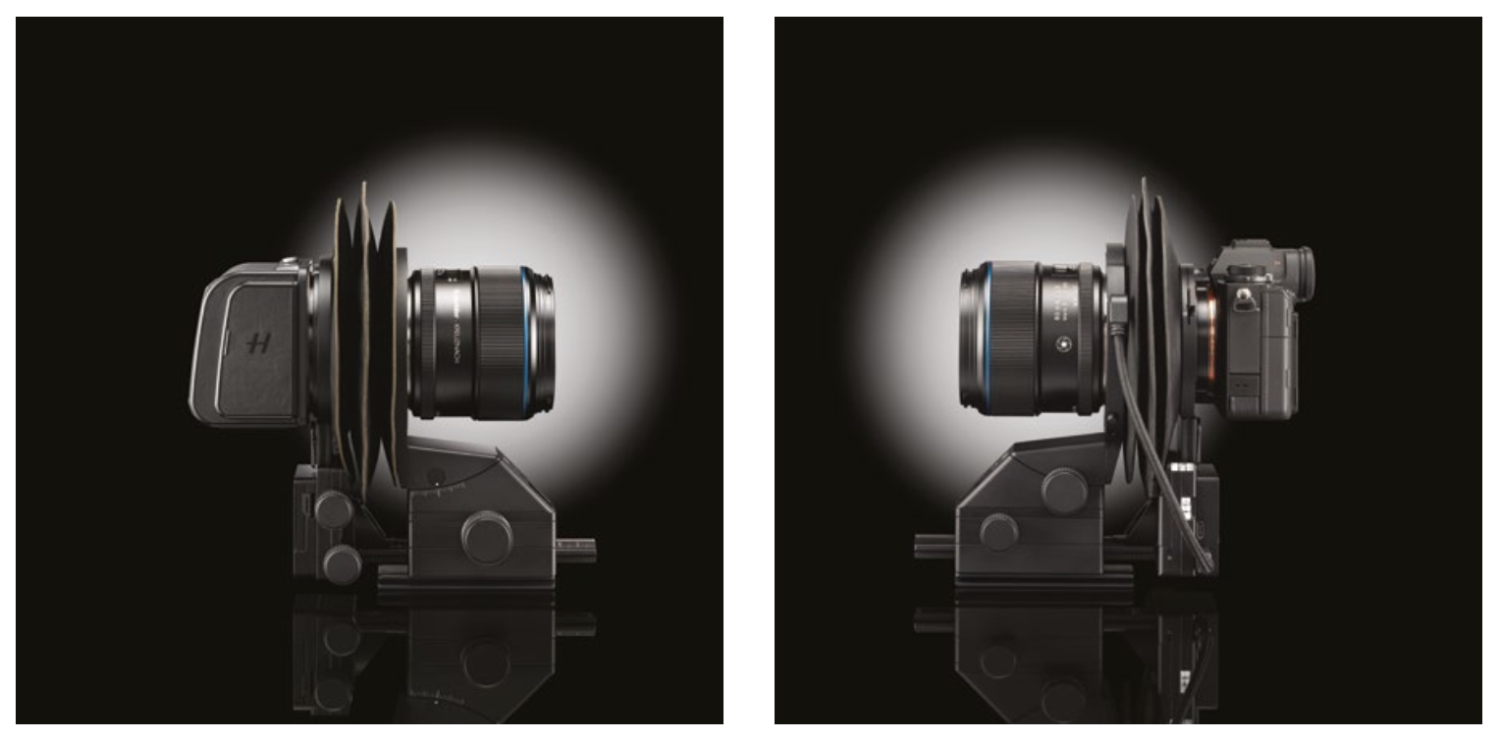
Pico was designed from the outset to obtain the very best accuracy and maximum rigidity at strategic points. Made from a special aluminium alloy, Pico is lightweight and compact when collapsed for packing away.
I haven’t had the Arca Swiss Pico in my hands yet, but knowing other products from this company and looking at the photos and drawings of the camera, I am convinced that it is a very precisely crafted device. I am confident that the main issue noticed by F-Universalis users using mirrorless cameras, namely the imprecise rear mounting, has been eliminated here. Mounting the camera in the F-Universalis could cause a tilt, which could affect the sharpness of the photos.
For an extended period, I used the Cambo Actus with a Phase One back for heavy, precise studio work. It cannot be denied that the Arca Swiss Pico is similar in design to the Cambo view camera. However, I am convinced that it is free from the main flaws of the Cambo, at least from my perspective. I am referring to the precision of the front tilt and swing movements. With the Cambo, I had trouble precisely zeroing these movements, meaning setting the lens and sensor planes perfectly parallel. Looking at the materials showing the Arca Swiss Pico, I see that a more precise design has been employed here. From my experience with Arca Swiss products, they excel at solving small details like the zero position of the knobs. The front standard in the Pico appears to be much more robust and rigid than in the Cambo. The lens exchange mechanism has been designed differently than in the Cambo, and therefore, it will likely be free of play. I think this is precisely why there is no front shift. In the Cambo, there is a very limited possibility to adjust the lens height in some situations.
Compatible With The Finest Quality Optics
The Pico does not include its own shutter system but utilizes the shutter of the attached camera or lens. This means it can control the aperture of the lens while relying on the camera’s own mechanisms for exposure. Pico is compatible with medium format lenses and enables exceptional quality lenses to be adapted to fit mirrorless camera bodies, including the majority of Rodenstock, Phase One Blue Ring and Silver Ring lenses. The Pico system is also adaptable to older lenses that are still in widespread use and available on the second-hand market for example Tentax 645. ARCA-SWISS has announced that it will continue to develop future lens boards to ensure compatibility with the widest possible range of lenses.
With controls for tilt and swing at the front and shift at the rear, The camera has a 20 mm lateral and vertical shift capability on the rear standard. The front standard does not have shift functionality. Therefore with the Pico camera, there is no change in perspective when making shifts at the rear – an invaluable advantage for image stitching. Panorama creators will certainly appreciate the ability to utilize rear shift.
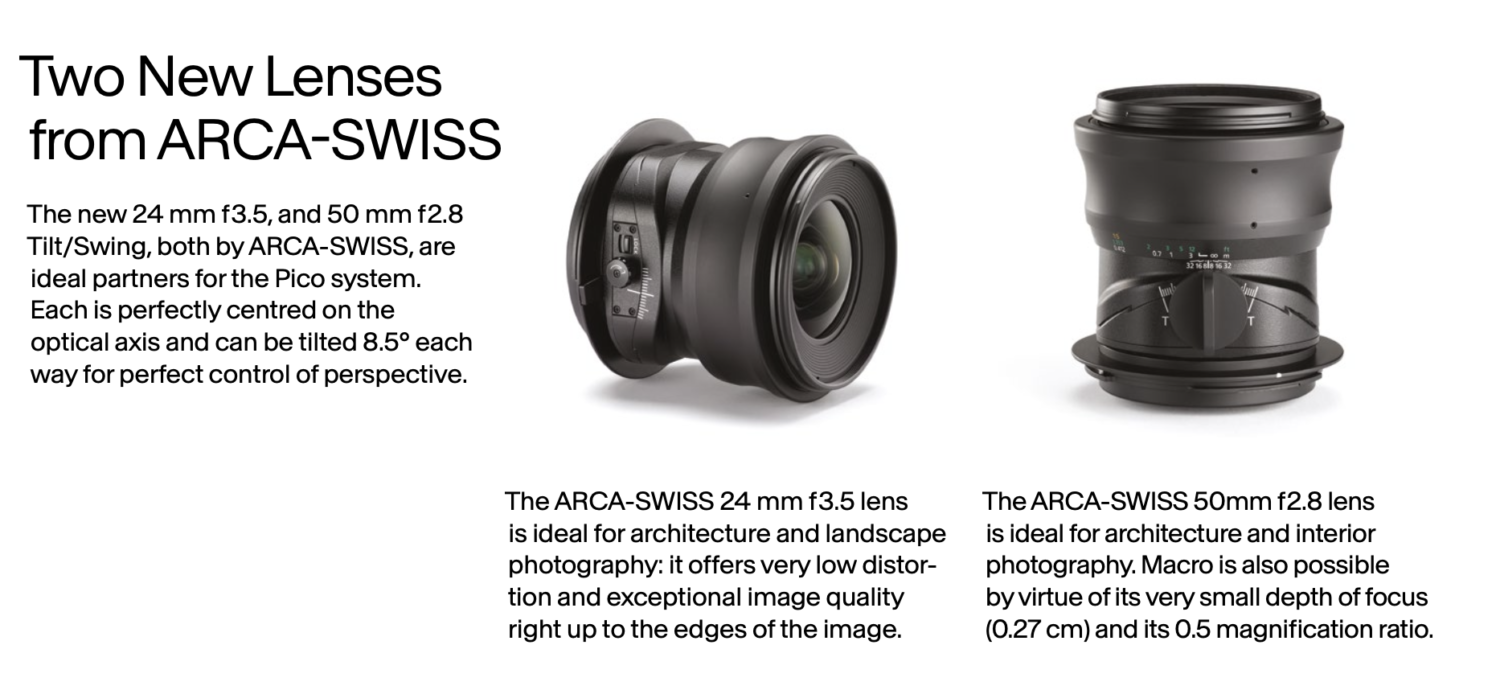
Along with the camera, two lenses were presented, which closely resemble the well-known Canon TSE lenses. It’s worth noting that they were presented in a new mount dedicated to the Pico system and they lack the shift function. Instead, they have the tilt function. I suspect that these are Canon lenses modified by Arca Swiss (or perhaps produced by Canon specifically according to Arca Swiss’ needs?). For design reasons, it was quite easy to remove the ring with rotation and shift, which was not needed because Pico already has its own shift, but removing the tilt was more complicated and probably required the creation of a completely new product. Doubling the tilt function is unnecessary for me. Of course, these lenses have an image circle allowing the use of a medium-format digital back. Cambo has implemented a similar solution by offering a wider selection of lenses called Actar, which are modified products such as the Laowa shift or Nikkor PCE lenses.
A certain problem for architectural photographers, especially those focusing on interior photography, may be the lack of a sufficiently wide-angle lens compatible with Pico.
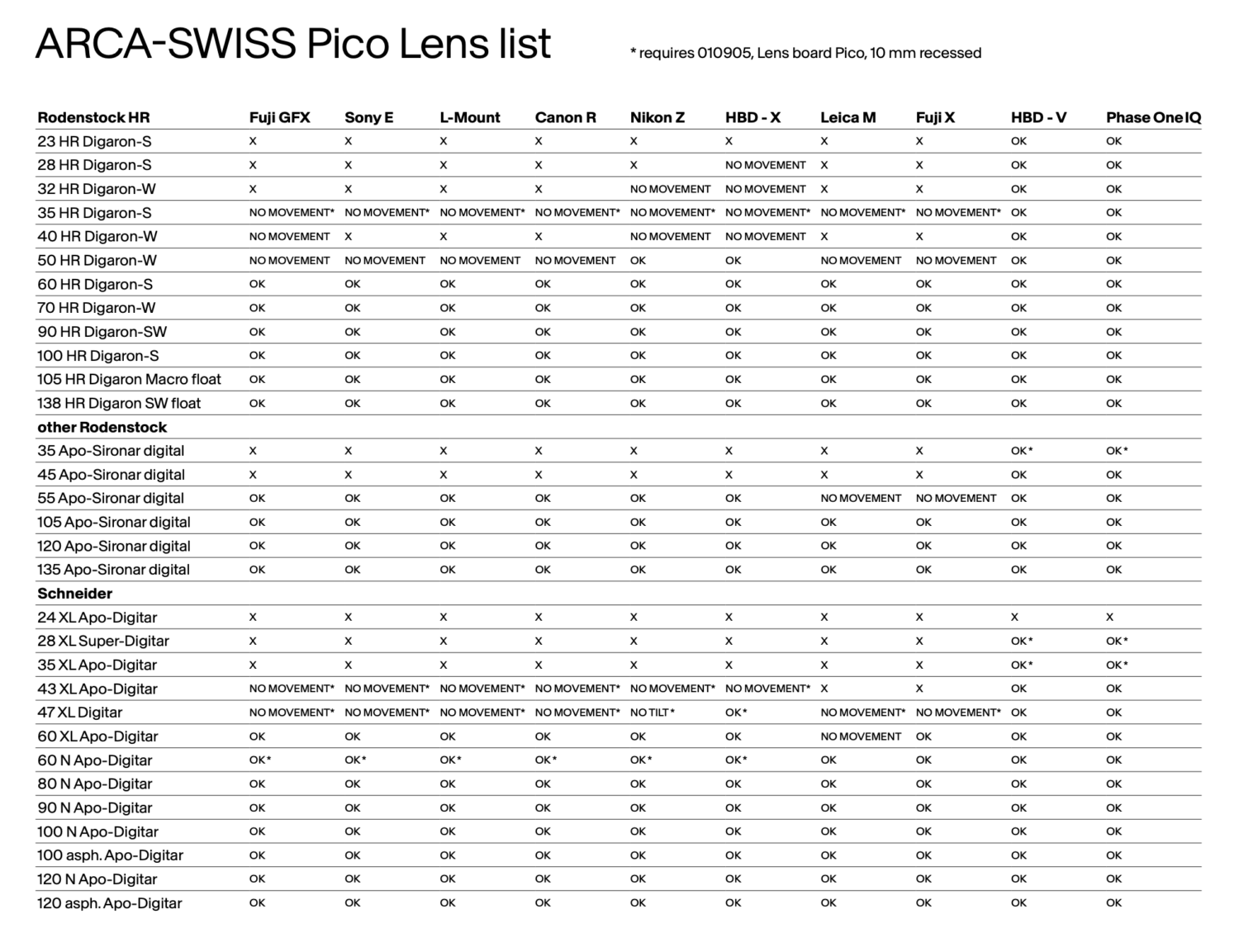
In the case of view camera designs, a limitation is the thickness of the camera itself, which affects the possibility of using sufficiently wide lenses (see compatibility table). At this moment, due to the lack of suitable adapters, we cannot use lenses such as the Nikkor PC 19, Canon TS-E 17, Laowa Shift 15, or Laowa Shift 20. I think such an option will be available in the future.
Technical specifications
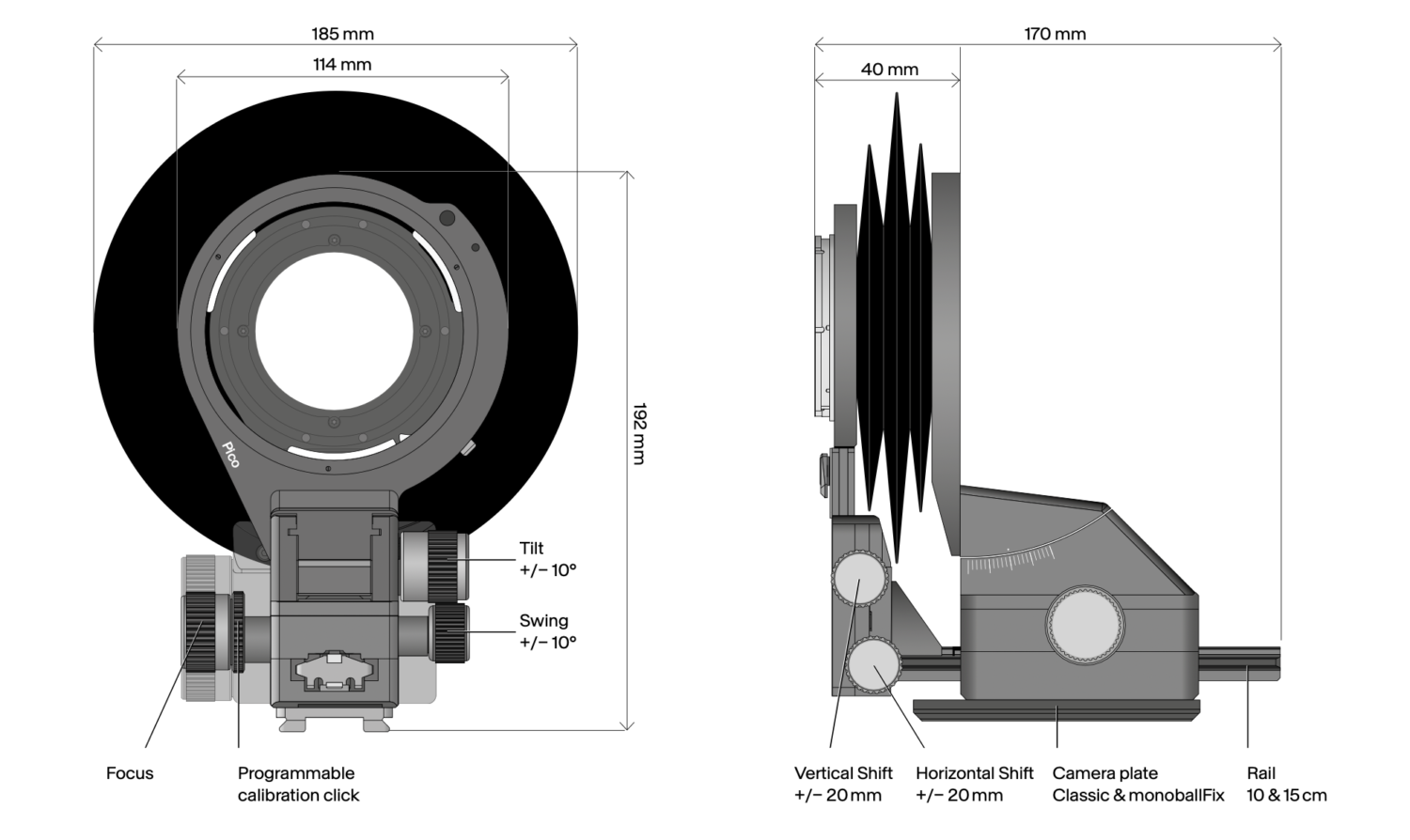
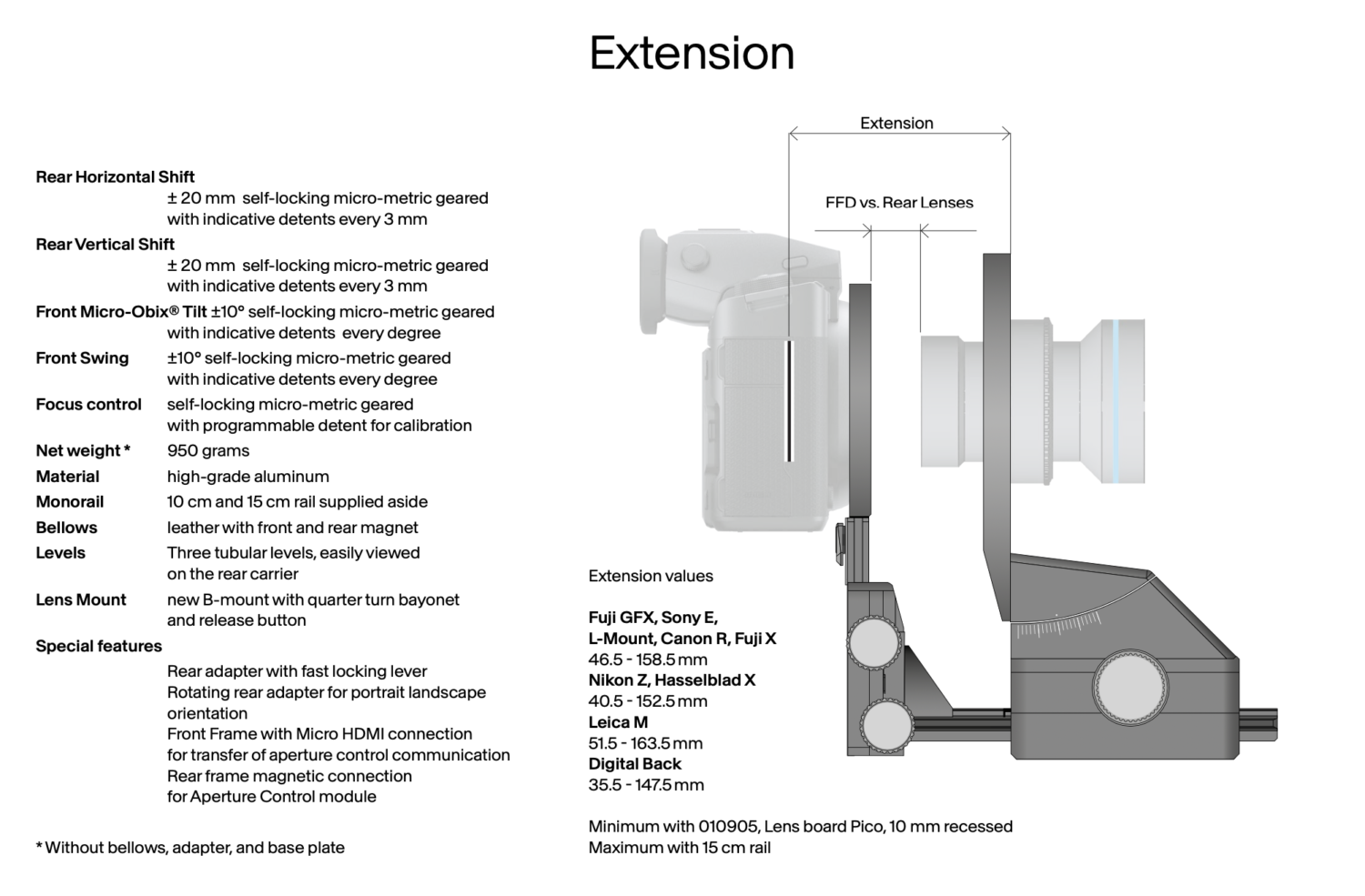
Pico system
The Arca Swiss Pico combines modern electronic control with the robust and versatile mechanical design that Arca Swiss is known for, making it a valuable tool for studio and field photography.
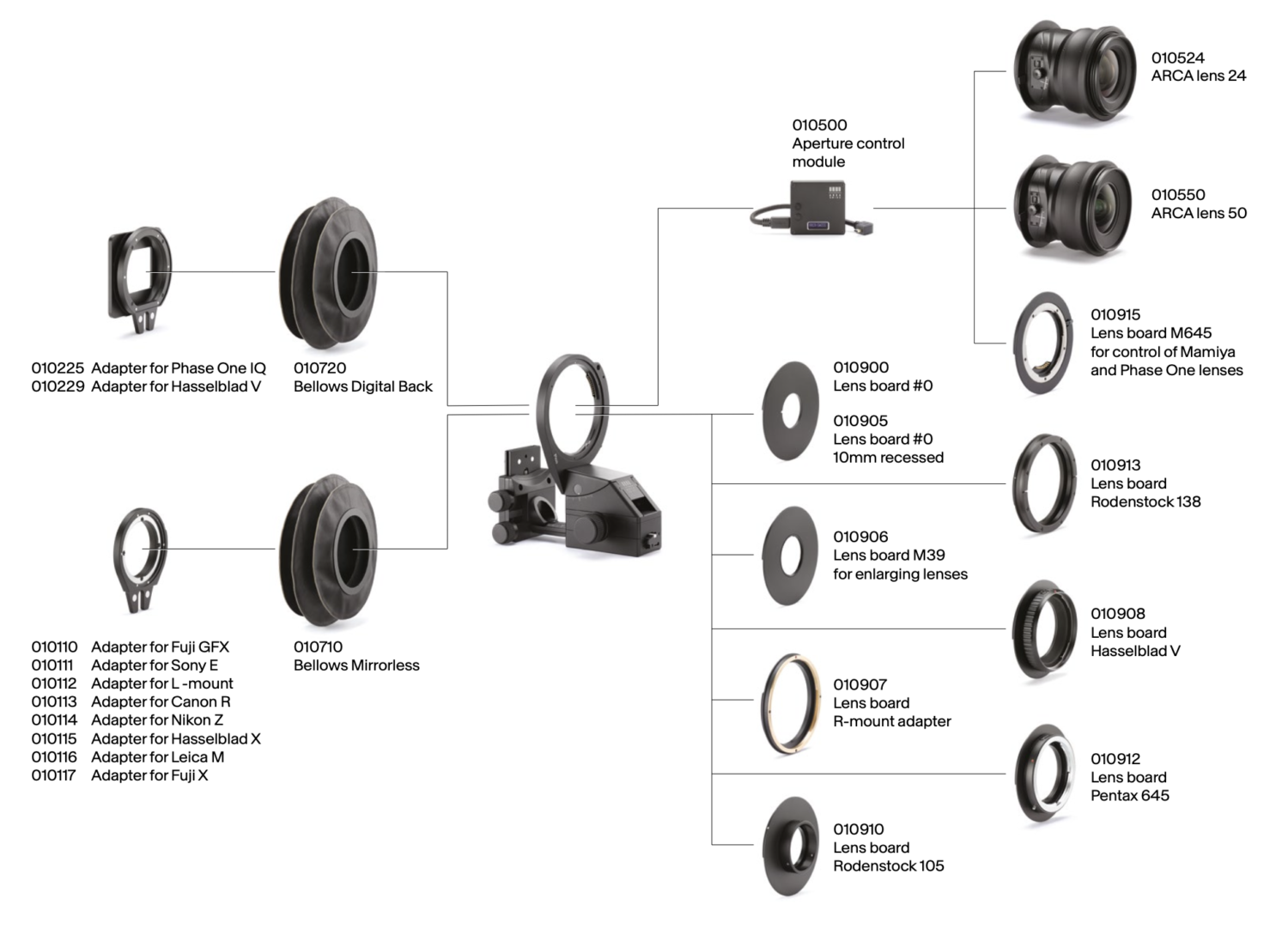
I am curious if there will be an adapter available for Canon lenses allowing aperture control and the use of native Canon or Nikon shift lenses. This would be a good solution for photographers who already own a set of lenses and would like to use them in the Pico system without the need for costly investments. We will see how the system develops in the future. At the moment, in my opinion, I would describe the person who should be most interested in the Arca Swiss Pico as follows: an experienced architectural photographer who already owns high-quality, expensive large-format lenses (Rodenstock or Schneider) and/or a Phase One system with a digital back and is looking for a more convenient, smaller, and easier-to-use system. Perhaps their current setup is outdated, and despite offering high resolution and tonal range, it is simply inconvenient to work with due to a very slow and poor live view, outdated cards, and an uncomfortable interface (I know this from the Phase One IQ180!). With the Pico, such a photographer can successfully utilize their lenses, adding the shift function to them. Additionally, they can transition to a camera allowing for faster and easier work, such as the Fuji GFX or Sony A7RV (or another).
Conclusion
Pico is a very interesting system, and I am glad it has appeared on the market. This is primarily because Arca Swiss is a brand that guarantees high quality and precision in craftsmanship, which is important for this type of equipment. The Pico’s compatibility with a wide range of digital backs and mirrorless cameras, along with its support for high-quality lenses, positions it as a versatile tool for professionals. Although it currently lacks compatibility with some ultra-wide-angle lenses, the potential for future adaptor developments suggests that this gap may soon be filled.
I hope that more information about this camera will be available soon. I am curious if Yohan Zerdoun, who had the opportunity to work with the Pico, will share his experiences online. I also hope that APA will test the new view camera from Arca Swiss for you in practice.
